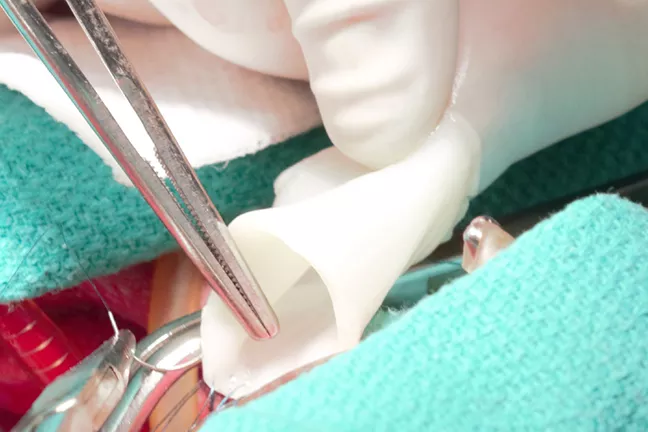
Researchers are working to create an “off-the-shelf” material that doctors can implant in a patient, and it can grow in the body. This research has the potential to prevent the need for repeated surgeries in some children with congenital heart defects.
The study was published today in the journal Nature Communications.
One of the greatest challenges in vessel bioengineering is designing a vessel that will grow with its new owner.
In this study, University of Minnesota Department of Biomedical Engineering Professor Robert Tranquillo and his colleagues generated
«This might be the first time we have an ‘
To develop the material for this study, researchers combined sheep skin cells in a
The researchers then used special detergents to wash away all the sheep cells, leaving behind a
«What’s important is that when the graft was implanted in the sheep, the cells repopulated the blood vessel tube matrix," Tranquillo said. «If the cells don’t repopulate the graft, the vessel can’t grow. This is the perfect marriage between tissue engineering and regenerative medicine where tissue is grown in the lab and then, after implanting the decellularized tissue, the natural processes of the recipient’s body makes it a living tissue again.»
At 50 weeks of age, the sheep’s blood vessel graft had increased 56 percent in diameter and the amount of blood that could be pumped through the vessel increased 216 percent. The collagen protein also had increased 465 percent, proving that the vessel had not merely stretched but had actually grown. No adverse effects such as clotting, vessel narrowing, or calcification were observed.
«We saw growth and none of the bad things happened," Tranquillo said. «The results are very encouraging.»
Tranquillo said the next step is talking with doctors to determine the feasibility of requesting approval from the Food and Drug Administration (FDA) for human clinical trials within the next few years.
In addition to Tranquillo and Syedain, other researchers who were part of the study included, Jay Reimer and Sandra Johnson from the Department of Biomedical Engineering, and Matthew Lahti and James Berry from the University of Minnesota Experimental Surgical Services in the Academic Health Center.
The research was funded primarily by a Pediatric Device Innovation Consortium grant from the University of Minnesota Academic Health Center’s Clinical and Translational Science Institute. Funding from the National Institutes of Health’s Heart, Lung Blood Institute aimed at making vessel containing a heart valve that can grow also contributed to this research.
To read the full research paper entitled «Tissue engineering of acellular vascular grafts capable of somatic growth in young lambs," visit the Nature Communications website.
Source: http://twin-cities.umn.edu/news-events/artificial-blood-vessels-developed-lab-can-grow-recipient


